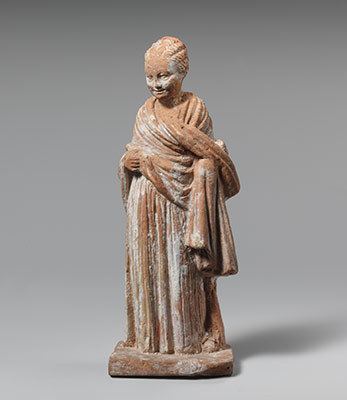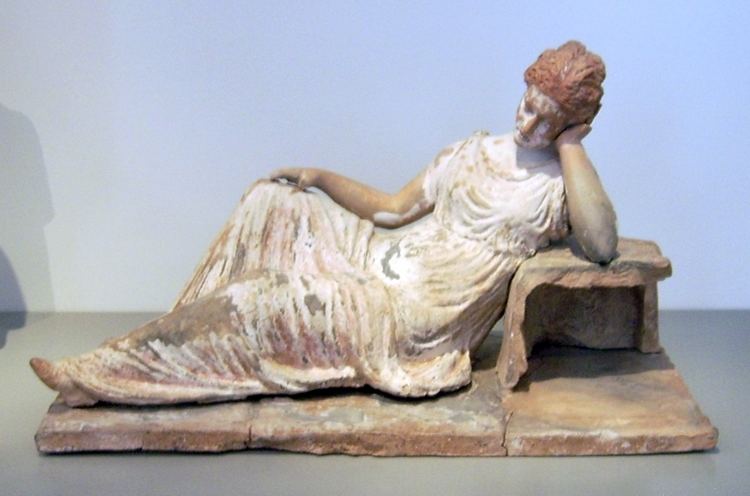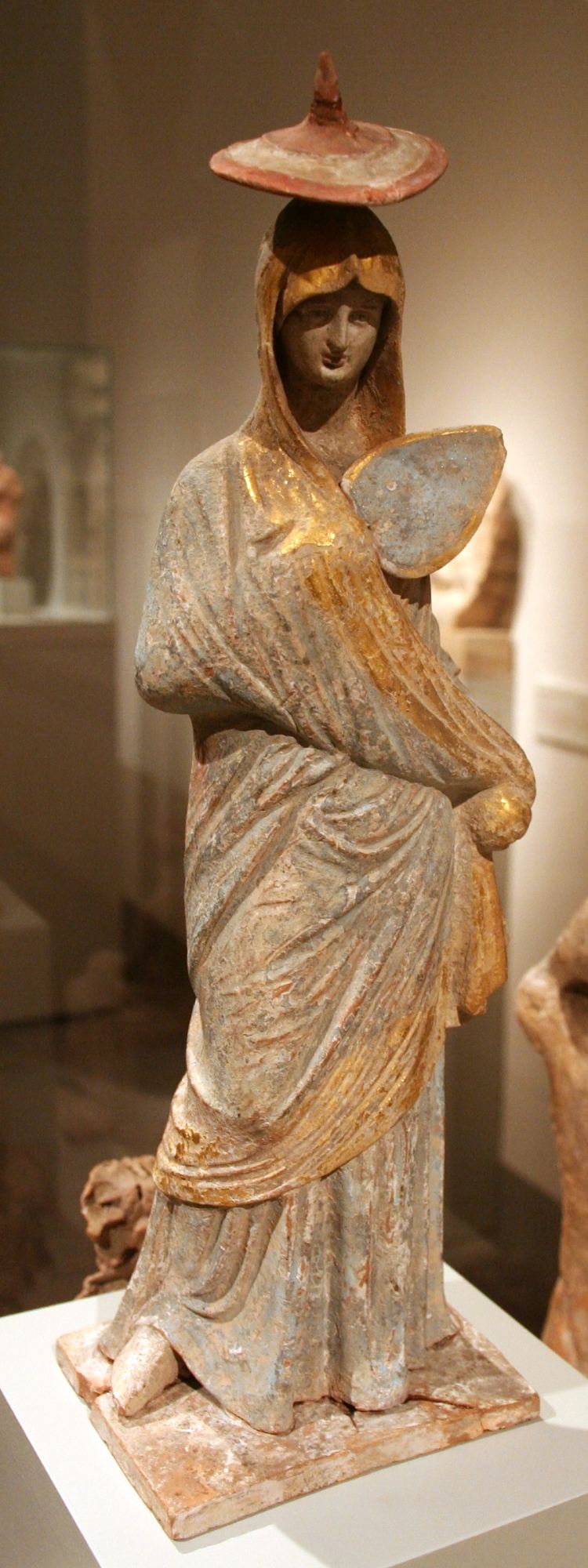 | ||
Similar Kroisos Kouros, Marble sculpture, Artemision Bronze, Peplos Kore, Winged Victory of Samothrace | ||
The Tanagra figurines were a mold-cast type of Greek terracotta figurines produced from the later fourth century BC, primarily in the Boeotian town of Tanagra. They were coated with a liquid white slip before firing and were sometimes painted afterwards in naturalistic tints with watercolors, such as the famous "Dame en Bleu" ("Lady in Blue") at the Louvre. Scholars have wondered why a rural place like Tanagra produced such fine and rather "urban" style terracotta figures.
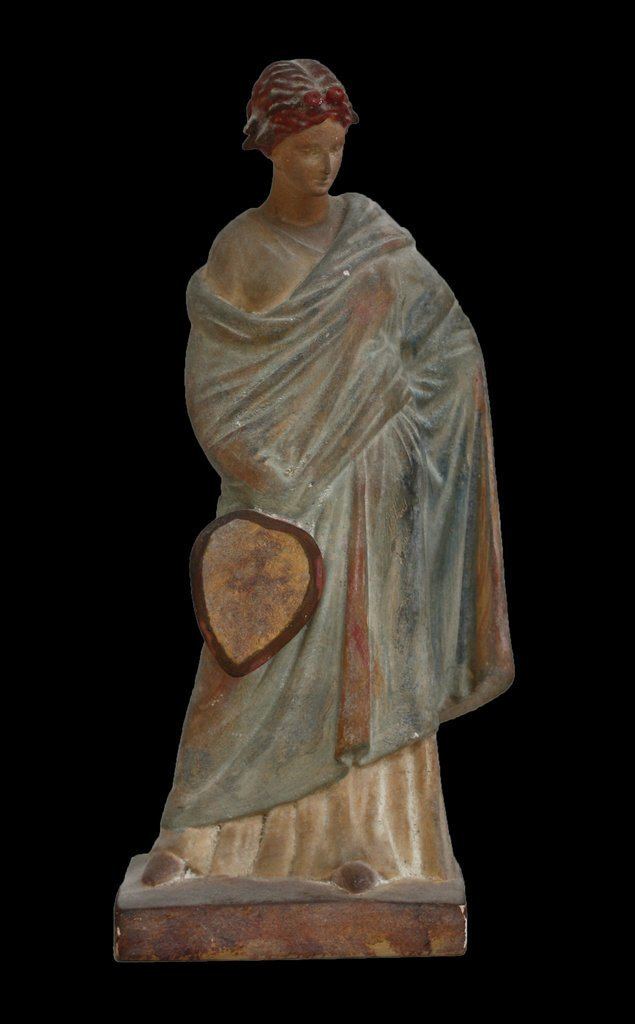
Tanagra figures depict real women — and some men and boys — in everyday costume, with familiar accessories like hats, wreaths or fans. Some character pieces may have represented stock figures from the New Comedy of Menander and other writers. Others continued an earlier tradition of molded terracotta figures used as cult images or votive objects. Typically they are about 10 to 20 centimetres high.
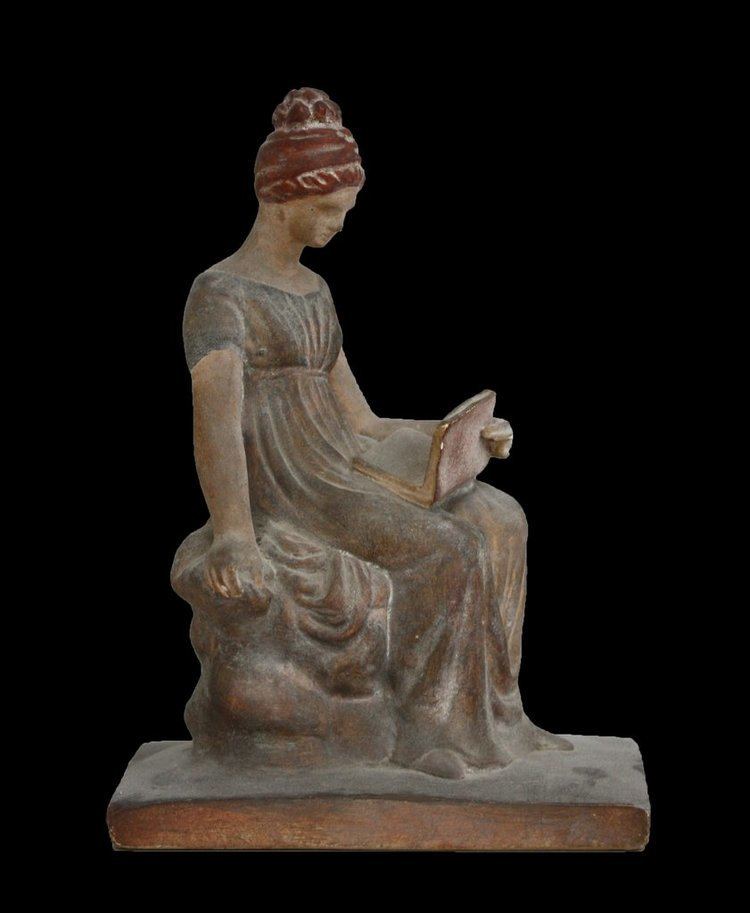
The coraplasters, or sculptors of the models that provided the molds, delighted in revealing the body under the folds of a himation thrown round the shoulders like a cloak and covering the head, over a chiton, and the movements of such drapery in action.
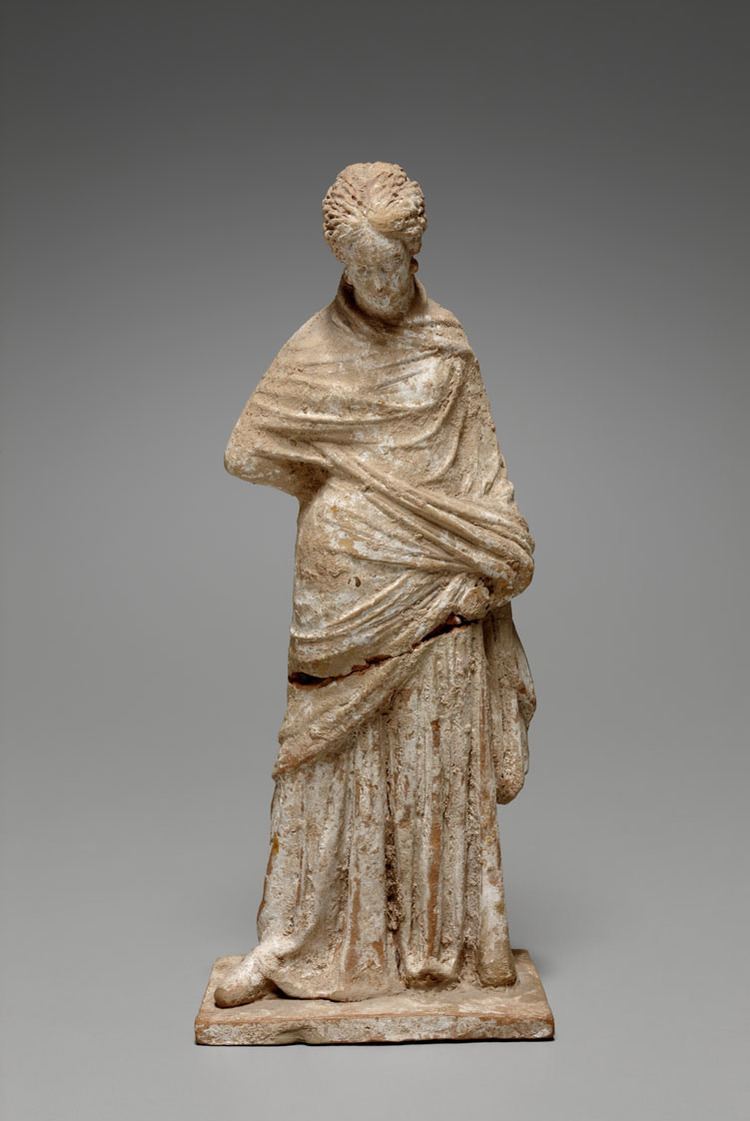
Discovery
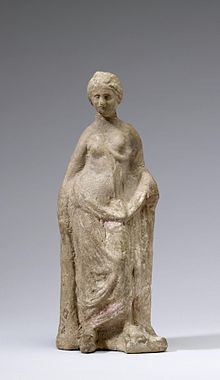
Tanagra figures had not been much noted before the end of the 1860s, when ploughmen of Vratsi in Boeotia, Greece, began to uncover tombs ranging in date over many centuries. The main finds especially from the 4th and 3rd centuries BC were secured in 1874. Inside and outside the tombs of the Hellenistic period — 3rd to 1st centuries BC — were many small terracotta figures. Great quantities that were found in excavation sites at Tanagra identified the city as the source of these figures, which were also exported to distant markets. In addition, such figures were made in many other Mediterranean sites, including Alexandria, Tarentum in Magna Graecia, Centuripe in Sicily and Myrina in Mysia.

The figures appealed to 19th century middle-class ideals of realism, and "Tanagra figures" entered the visual repertory of Europeans. Jean-Léon Gérôme created a polychromatic sculpture depicting the spirit of Tanagra, and one French critic described the fashionable women portrayed in the statuettes as "the parisienne of the ancient world". Oscar Wilde, in his novel The Picture of Dorian Gray (1891), has Dorian liken his love, Sybil, to "the delicate grace of the Tanagra figurine that you have in your Studio, Basil." [1] Later, in his play An Ideal Husband (1895), Wilde introduces the character of Mabel Chiltern upon her entrance by stating (amongst further description), "she is really like a Tanagra statuette, and would be rather annoyed if she were told so." [2]
Under the pressure of collectors' demands in the late 1800s, Tanagra terracottas began to be faked.
